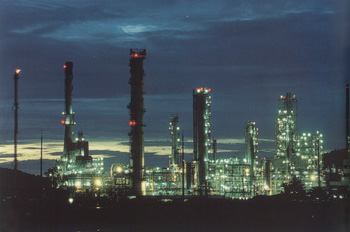|
|
|
The Land and Its People, Thailand into the 2000's
|
The Land and Its People
Covering an area of 513.115 square
kilometres, roughly the size of France, Thailand
displays remarkable topographical
and climatic variety in its four major
regions. Its population is also diverse:
though politically united and socially
harmonious, many minority groups
still preserve a cultural identity that is
reflected in social, religious, and linguistic differences.
In the far north, bordered by
Myanmar and Laos. granitic forest-clad
mountains rise to heights of more
than 2.000 metres, lowering over fertile
valleys watered by a number of rivers
and streams. Teak and other hard-wood
trees are indigenous to the region, and
have provided basic building material for
centuries. During the winter months,
temperatures can drop to nearly freezing
at higher altitudes, a dimate that allows
the cultivation of such temperate-zone
crops as coffee, lychees, strawberries.
and maeadamia nuts which, thanks
to modern methods of transportation,
now regularly appear in Bangkok supermarkets.
The rolling Northeastern Plateau,
by contrast, stretching to the Mekong River
and sharing borders with both Laos and
Cambodia, suffers from frequent
droughts and thin, sandy soil. Conditions
in this traditional "problem area," however,
are rapidly improving through the
building of reservoirs and other
man-made waier facilities, as well as
the introduction of new crops and the
construction of new roads for more
efficient movement of goods.
Most of the great events of Thai history have taken place in the Central
Plains. Watered by the winding Chao Phraya River,
this vast basin is one of the most fertile rice-growing areas in the
world, protected from climatic extremes
by mountains to the north and west and
by the lofly Korat Plateau to the cast.
Assorted groups have been attracted to
this region since prehistoric times, and
three Thai capitals have drawn their
sustenance from the extensive fields and
orchards that spread across the flat
countryside like pieces of a complex jigsaw puzzle.
Southern Thailand is a long
peninsula, reaching like a probing
elephant's trunk down to Malaysia and
bordered for most of its length by the
Gulf of Thailand on one side and the
Indian Ocean on the other, with a ridge
of jungled mountains in between in
many areas. Some of the world's most
beautiful beaches and underwater
scenery can be found along this
coastline and on islands that lie just offshore.

Natural gas supplies energy for ihr Eastern Seaboard
|
The country is blessed with a
wide range of natural resources. While
logging is now restricted in the foresis
of the north, the region contains
rich deposits of flourite, wolfram, and
tungsten, and its riverine valleys support
a large number of orchards and farms.
Potash is plentiful in the northeast, and
mulberry plantations have traditionally
sustained the cultivation of silkworms;
the world's largest facility for producing
hand-woven silk is located near Korat
(Naklion Ratchasima). Both flourile and
gems are mined in the west. and some
of the finest sapphires come from the
southeast. The Chao Phraya valley has
a network of irrigation canals supplying
water not only to its countless rice
fields but also to vegetable farms and
fruit orchards. Natural gas deposits in
the Gulf of Thailand are supplying
energy for many development projects,
particularly along the Eastern Seaboard.
In addition to an abundant supply of
seafood, the south has extensive deposits
of tin, as well as huge plantations of
rubber, coconuts, and cashew nuts.
Thailand's population reflects Its
history. Though the great majority are
ethnically Thai and Buddhist, there
are a substantial number of minority
groups, most of whom have either been
assimilated or live together in harmony.
Of these the Chinese arc perhaps the
most numerous, especially in urban
areas, though because of intermarriage
and long years of residence it is difficult
to isolate them as a distinct group. Similarly. while there are large Lao and
Khmer groups in the northeast and west,
nearly all regard themselves as Thai,
culturally as well as by nationality. More
clearly defined are the Muslims, mainly
concentrated in the southern provinces,
and assorted tribal groups in the
mountains of the far north; there are also
sizeable communities of Hindus and Sikhs
in large cities like Bangkok.
| | |
|
|